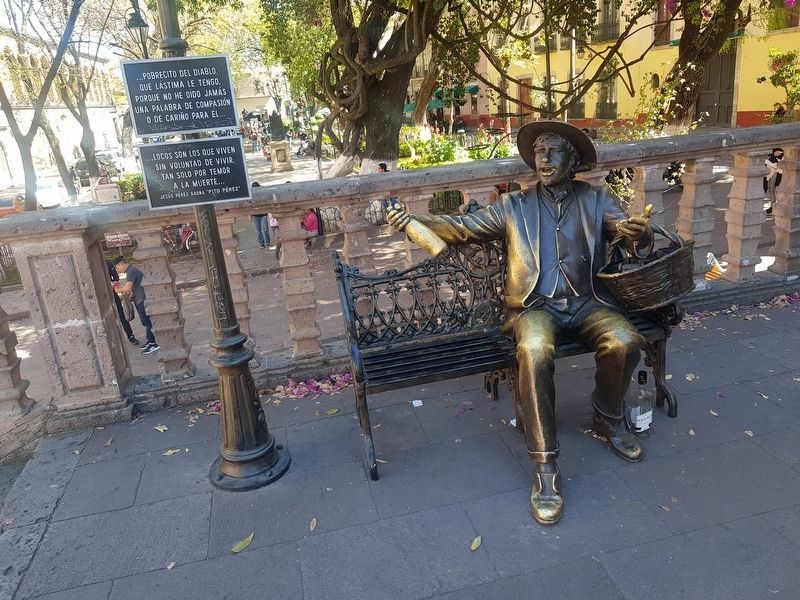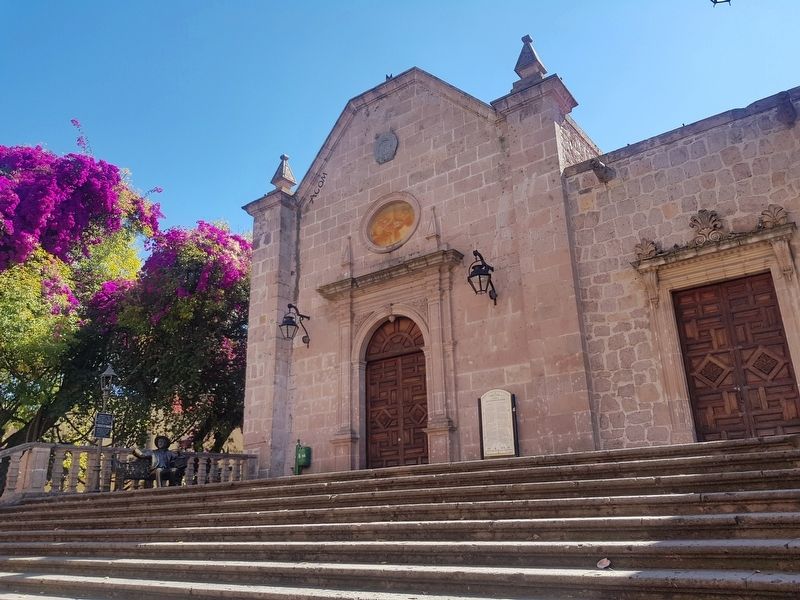Morelia, Michoacán, Mexico — The Pacific Coast (and Central Highlands)
José Rubén Romero Theater
Teatro José Rubén Romero
(Capilla Doméstica Jesuita)
Este inmueble funcionó como casa de ejercicios y capilla doméstica de los jesuitas hasta 1767, fecha en que la Compañía de Jesús fue expulsada de la entonces Nueva España.
En 1824 la capilla pasó a manos del clero secular y las carmelitas descalzas también conocidas como teresianas se establecieron aquí. Fue en 1849 cuando las monjas habían considerado la construcción del que sería su nuevo claustro, sin embargo, no llegó a ser construido en consecuencia de su expulsión motivada por las Leyes de Reforma.
Posteriormente este edificio tuvo diversas funciones, fue cárcel de mujeres y en varias ocasiones funciónó como cuartel.
En 1966 el Gobierno del Estado rescató el deteriorado inmueble y en este proceso fueron modificadas las fachadas y las antiguas bardas que delimitaban el recinto. La nave de capilla se adaptó como teatro, donde aún se puede admirar el magnífico trabajo de cantería de la bóveda.
Los espacios anexos fueron reacondicionados como oficinas al servicio de la Universidad Michoacana de San Nicolás de Hidalgo.
José Rubén Romero Theater
(Former Jesuit Domestic Theather)
This plot of real estate functioned as a house for religious exercises and as the domestic chapel of the Jesuits until 1767, on which date the Companion of Jesus was expelled from what was the New Spain.
In 1824, the chapel became controlled by the secular clergy and the barefoot Carmelite nuns - also known as Teresians - established themselves there. It was in 1849 that the nuns began the construction of what would be their new cloister, which was never finished as a consequence of their expulsion due to the Reform laws ("Leyes de Reforma"). Afterwards this building had various functions; it was a women's prison and on several occasions it served as an army headquarters.
In 1966 the state Government restored the deteriorated property and in this process the acade and the ancient fences, which delimited the enclosure were modified. The chapel nave or aisle was adopted as a theater, where it is still possible to admire the magnificent masonry work of the vault.
The atached spaces were reconditioned as offices at the service of the Michoacán University of San Nicolás de Hidalgo ("Universidad Michoacana de San Nicolás de Hidalgo).
Erected by UNESCO, Ayuntamiento de Morelia y otras organizaciones.
Topics. This historical marker
is listed in these topic lists: Arts, Letters, Music • Churches & Religion • Colonial Era • Man-Made Features. A significant historical year for this entry is 1767.
Location. 19° 42.277′ N, 101° 11.707′ W. Marker is in Morelia, Michoacán. Marker is at the intersection of El Nigromante and Calle de Santiago Tapia, on the right when traveling south on El Nigromante. Touch for map. Marker is in this post office area: Morelia MIC 58000, Mexico. Touch for directions.
Other nearby markers. At least 8 other markers are within walking distance of this marker. Garden of the Roses (within shouting distance of this marker); Dr. Ignacio Chávez (about 150 meters away, measured in a direct line); Public Library of Morelia (about 150 meters away); University Public Library (about 150 meters away); Natalio Vazquez Pallares (about 150 meters away); Sorinne Font (about 150 meters away); Dr. Manuel Martínez Solórzano (about 180 meters away); El Colegio Primitivo y Nacional de San Nicolás de Hidalgo (about 180 meters away). Touch for a list and map of all markers in Morelia.

Photographed By J. Makali Bruton, January 27, 2019
3. Statue of "Pito Pérez" near the entrance to the José Rubén Romero Theater
The statue depicts the main character of the novel La vida inútil de Pito Pérez (The Futile Life of Pito Pérez) by José Rubén Romero (1938). The statue's tablet reads:
…pobrecito del diablo. Que lástima le tengo, porque no he oído jamás una palabra de compasión o de cariño para él…
…locos son los que viven sin voluntad de vivir, tan solo por temor a la muerte…
Jesús Pérez Gaona “Pito Pérez”
English translation:
... poor thing the devil. What pity I have for him, because I have never heard a word of compassion or affection for him ...
... crazy are those who live without the will to live, only for fear of death ...
Jesús Pérez Gaona "Pito Pérez"
…locos son los que viven sin voluntad de vivir, tan solo por temor a la muerte…
Jesús Pérez Gaona “Pito Pérez”
... poor thing the devil. What pity I have for him, because I have never heard a word of compassion or affection for him ...
... crazy are those who live without the will to live, only for fear of death ...
Jesús Pérez Gaona "Pito Pérez"
Credits. This page was last revised on February 10, 2019. It was originally submitted on February 10, 2019, by J. Makali Bruton of Accra, Ghana. This page has been viewed 135 times since then and 11 times this year. Photos: 1, 2, 3. submitted on February 10, 2019, by J. Makali Bruton of Accra, Ghana.

